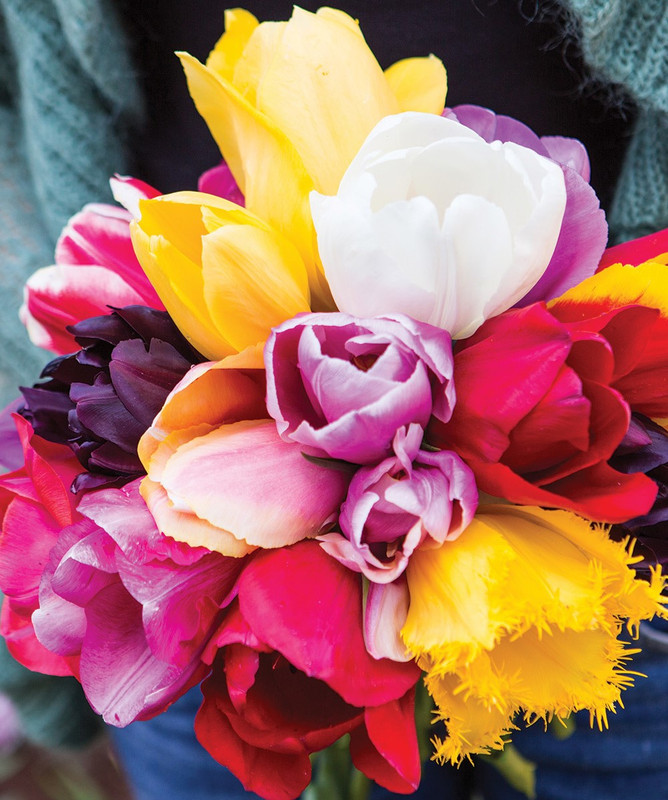Ordered Tuesday evening, delivered Thursday morning..........................

No, not a bag of potatoes, instead 100 bulbs which will soon be planted into pots. It's been a number of years since I've planted bulbs, something I once did yearly. This started in my mid-teens sitting with my grandmother thumbing through the Tesselaar mail order catalog. We would then place an order together and split the postage, with a high focus on Tulips and Daffodils. Funnily, Tesselaar still send out mail order catalogs where you send a money order or cheque.............remember those. I however went with the convenience of online ordering.
And for those wondering, no its not pronounced Tesla like the car, rather Tess-sell-lar.
In the name of tradition, I ordered Tulips and Daffodils. With a limitless list of Tulip varieties, I decided to keep it simple and went with a mixture. I over ordered because I want to mass plant them in pots, in this situation having complimentary or matching tones doesn't matter, it's all about COLOUR! These mix packs are also cheaper, especially when on sale.
https://www.tesselaar.net.au/product/738-tulips-mega-mix

Just like Tulips, there is a huge selection of Daffodils available now, but I like the classic King Alfred variety for the size of bloom. Despite the lack of colour variation, when planted on mass you create a high impact display. Oh, and they were also on sale. :wink2
https://www.tesselaar.net.au/product/503-daffodil-king-alfred

There is something so hopeful about planting bulbs, what look like dead onions get planted out and forgotten about for several months, before bursting into life and rewarding your patience with a spectacular bloom.
Fun Fact - Daffodils and Jonquils go under the genus
Narcissus..................
"The botanical name for the daffodil is Narcissus, named after a young man known for his beauty in Greek mythology who was tricked into falling in love with his own reflection. The drooping flowers that characterize most daffodils are said to represent Narcissus bending over to catch his reflection in a pool of water."
Back when I was studying, plant name etymology was something I took an interest in. Often, Latin botanical names point clues to the characteristics of the plant itself, so becoming familiar with this side of horticulture helps with identification, indicates colour or explains how a plant grows.
For example,
vulgaris means common, so when you see this listed as the second name it means the plant is widely grown or most prevalent in the wild.
Thymus vulgaris = Common Thyme.
Plants with the second name
paniculata refer to a cluster of branched induvial blooms, or a "panicle". For example, Murraya Paniculata, which references the clusters of highly perfumed white blooms. One of my favorite plants.
Or,
Betula Pendula Alba, the second and third names reference the draping/weeping branch work (pendula) and the white trunk (alba).
This was my bible at the time -
https://www.amazon.com.au/Gardeners-Handbook-Plant-Names-Meanings/dp/0486297152














